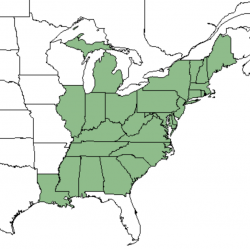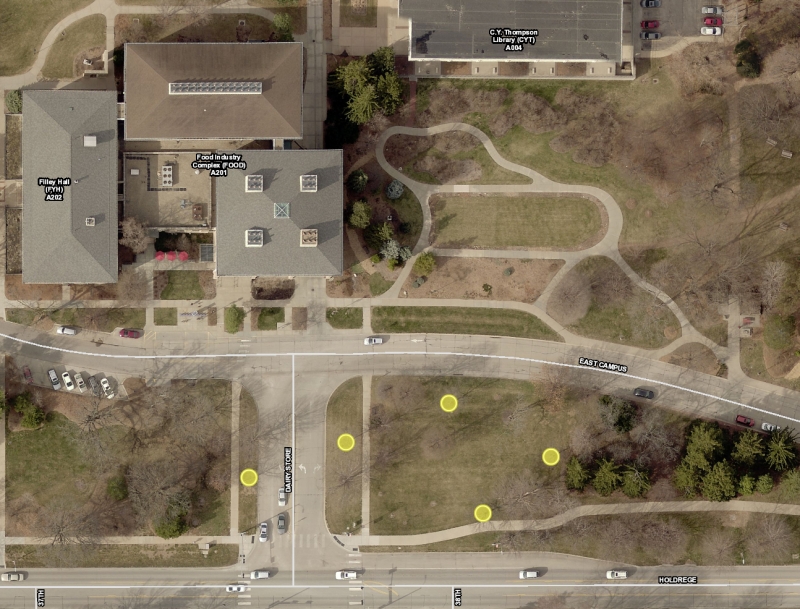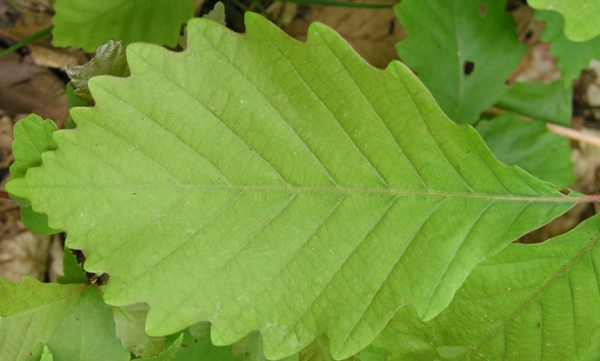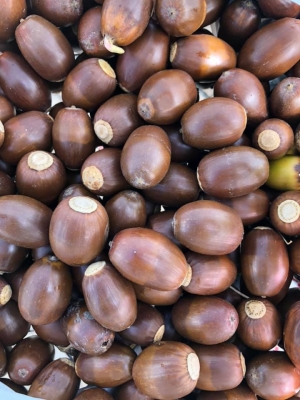
About Oaks (home) | Map | Plant List | Cultivar/Species Information | Sources | Other Campus Oaks of Interest
Latin Name: Quercus montana (previously Quercus prinus)
Common Name: Chestnut Oak

Cultivar:
Range: eastern U.S. and Canada
Family: Fagaceae
Division: White
Introduced: cultivated by 1688
Sun/Shade:
Height: 60'-70' × same
Form: pyramidal-oval-rounded when young, rounded with age
Zones: 4-8
Flower: male: 2-4" catkins, female: reddish, small single spikes
Leaves: Give the tree its common name as they are similarly-shaped as American Chestnut leaves. 4"-6" × 1½"-3½", coarsely and regularly lobed, 10-14 pairs, lustrous dark yellow-green above and grayish tomentose beneath.
Fall Color: Dull yellow to yellow-brown.
Fruit: Acorns, 1-2 on peduncles, ovoid; 1-1¼" × ¾", cap covers 1/3-½, dark brown, thin, and warty; one season to maturity.
Buds: 1/4-3/8", conical, grayish, reddish brown, slightly pubescent.
Bark: brown to almost black, looking corky; very smooth when young; developing hard, wide, flat-topped ridges, becoming thicker and sharper with age; richer in tannin than any other oak species.
Wildlife: Acorns eaten by upland game birds and songbirds, a wide range of large and small mammals (Black Bear, Raccoon, Fox Squirrel, Gray Squirrel, Red Squirrel, Southern Flying Squirrel, Eastern Chipmunk, and White-Footed Mouse.) Deer browse on the twigs and foliage, particularly of saplings. Older trees can provide habitat for cavity-nesting birds (e.g., woodpeckers, owls, & chickadees) and dens for small mammals (squirrels, bats, raccoons).
Disease issues:
Cultural Uses: acorns ground for food by indigenous peoples
Folklore:
Notes: Poor, dry, rocky upland sites
Where to find Quercus montana in Maxwell Arboretum
←Previous Oak → NEXT OAK
All images from Maxwell Arboretum unless noted.
Catkins and new foliage
Leaf
Nebraska Statewide Arboretum
Capless acorns
photo: Bob Hendrickson
Fall Color